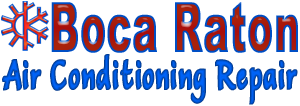Archives: October 30, 2017
Understanding the Role of Heat Exchangers
We are officially getting into the cold temperature seasons and before long you will be firing up your heating system. As you may know, a furnace system is made up of lots of critical components working harmoniously to ensure your home is heated to the required temperature. One of these crucial components is the heat exchanger. Without a functional heat exchanger, your furnace cannot produce any heat. Below is a discussion on what a heat exchanger is and how it functions.
A Heat Exchanger and the Working Mechanism
A heat exchanger is basically a component in your furnace that heats the air. It consists of a series of metal tubes or coils which on one end connect to the burner assembly and on the other end terminate at the flue or vent pipe. Within the heat exchanger, air and gas are separated to prevent any exposure or mixing of the harmful combustion products such as carbon dioxide.
The heating fuel which is typically natural gas, propane, or oil combusts in the heat exchanger and this creates heat which warms the surface. The blower motor then forces air over the heat exchanger and this causes the air to increase in temperature. Once the air gets warmed, it circulates through the ductwork and finds its way into your home.
Issues with Heat Exchangers
Any malfunctioning of the heat exchanger means that your home will not be heated to the right temperature. This directly impacts on the performance of the furnace as well as may pose serious health and fire risks.
Heat exchangers can crack, and this means the byproducts of the combustion process within the heat exchanger chamber can spill out. Since carbon monoxide is produced in the combustion, any leakages may contain this gas. In a normal functioning heat exchanger, the carbon monoxide produced is safely vented outside your home instead of it leaking into your home. Some of the signs that your heat exchanger is damaged or cracked include:
- Soot within your furnace
- Signs of rust on the heat exchanger
- Visible cracks
- Moving or flickering burner flames
- Water around the furnace base
- Symptoms of carbon monoxide exposure which include irritation of eyes or nose, nausea, and disorientation
Heat exchanger damages can be diagnosed by a highly skilled HVAC professional either through a camera or visual diagnostic examination. The HVAC technician will replace the exchanger so that the furnace can function safely again. The typical service life of a heat exchanger is about 10 to 20 years. This means during the replacement of the exchanger, you may as well upgrade the entire system.
The best way to take care of the heat exchanger is to have an annual maintenance program where HVAC professionals come in to check on the overall performance of the furnace and any signs of damage on the heat exchanger.


